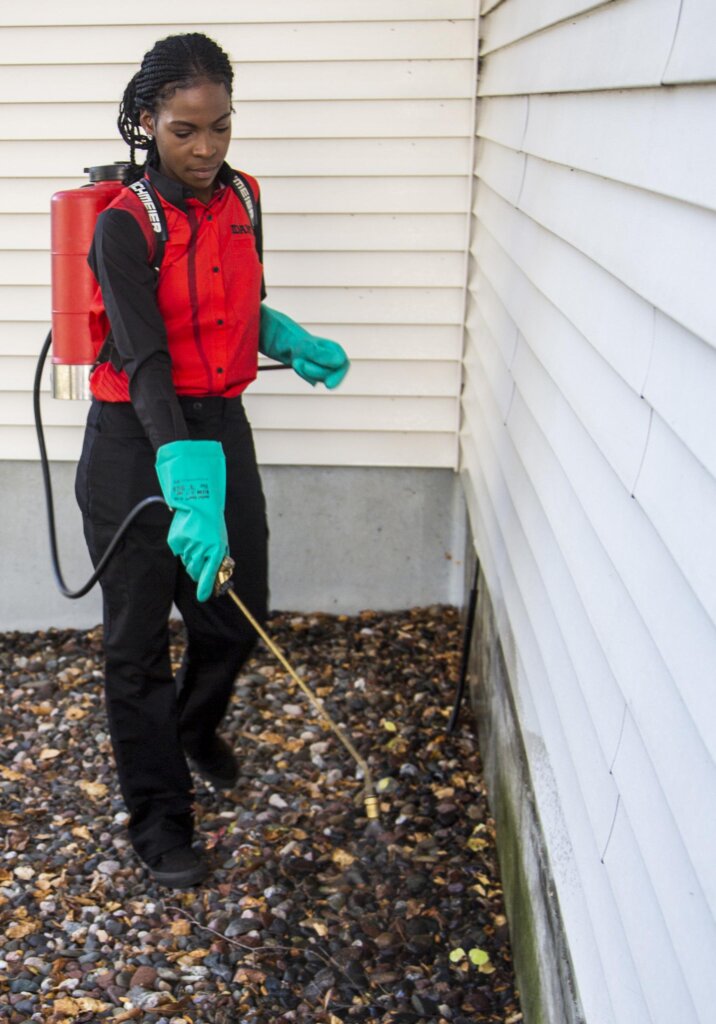Bed Bug Therapy Breakdown: Comparing Chemical Vs. Non-Chemical Solutions
In the world of bug control, especially when dealing with the consistent problem of bed insects, the option in between chemical and non-chemical therapy remedies can be a crucial one. Both approaches supply distinct benefits and downsides, affecting elements such as effectiveness, safety considerations, and total price. By checking out the nuanced details of each technique, a more clear understanding of which path to go after in resolving a bed pest invasion can be obtained.
Efficiency of Chemical Treatments
Chemical treatments for bed insect invasions have actually been extensively recognized for their powerful and fast efficacy in eliminating these parasites. When considering the performance of chemical therapies, it is critical to recognize that they can provide a complete and quick remedy to a bed insect trouble.
Additionally, chemical treatments have the benefit of supplying residual effects, indicating that they can continue to get rid of bed pests even after the initial application. This recurring action is especially advantageous in combating any type of possible re-infestations. Furthermore, the rapid action of chemical therapies can bring relief to people facing extreme bed bug invasions, allowing them to regain control of their space quickly.
Security Interest In Chemical Solutions
When using chemical solutions for bed insect treatment is making sure the safety and security of passengers and the environment,One essential facet that calls for cautious consideration. While chemical treatments can be reliable in removing bed insects, they might present threats otherwise taken care of appropriately. One of the key security problems with chemical remedies is the prospective harm they can cause to human health. Direct exposure to particular chemicals made use of in bed bug treatments can bring about breathing issues, skin inflammation, or various other unfavorable reactions, especially in individuals with pre-existing problems or sensitivities. Additionally, improper application or dose of chemical pesticides can lead to poisonous deposits remaining in the treated location, posturing long-lasting health risks to owners.
Furthermore, the ecological influence of chemical options is another considerable factor to consider. Some pesticides made use of in bed insect treatments might be harmful to useful pests, wildlife, and communities if they seep into the soil or water supply. It is important to make use of chemical treatments carefully, adhering to security standards, and taking into consideration much less harmful options to alleviate these threats and make sure the reliable and secure monitoring of bed insect problems.
Advantages of Non-Chemical Approaches
Considering the potential safety and security issues and environmental impact associated with chemical remedies for bed pest therapy, exploring non-chemical methods provides a promising option with numerous unique benefits. Non-chemical treatments are environmentally friendly, as they do not contribute to air or water pollution, making them a lasting selection for bug control.
Additionally, non-chemical options can be effective in targeting bed bugs, consisting of hard-to-reach areas where chemical treatments may not penetrate - A1 exterminator charlotte nc. Methods such as heat therapy, vacuuming, heavy steam cleansing, and cushion encasements offer comprehensive removal without the use of damaging chemicals.
Limitations of Non-Chemical Treatments

Furthermore, non-chemical therapies usually need numerous applications to accomplish effective elimination. This can be lengthy and may not constantly guarantee full elimination of all bed insects and their eggs, particularly in hidden or hard-to-reach areas.
Additionally, the success of non-chemical treatments greatly relies upon proper execution and thoroughness, which can be testing for people without expert experience. Poor application of non-chemical methods might cause insufficient eradication, leading to relentless invasions and the need for added therapies.
Therefore, while non-chemical treatments have their benefits, it is vital to recognize these limitations and consider them when identifying the most reliable method for taking care of bed pest invasions.
Price Contrast: Chemical Vs. Non-Chemical Options
Given the limitations connected with non-chemical therapies, an important aspect to assess in the context of bed pest monitoring is the expense contrast in between chemical and non-chemical choices. Chemical treatments normally include the application of insecticides by experts, which can range from $250 to $900 per room, depending upon the seriousness of the infestation and the size of the location to be dealt with. In comparison, non-chemical treatments like heat treatment or heavy steam can be a lot more expensive, with costs varying from $1,000 to $6,000 for an entire home. While the first expense of chemical click for more treatments might appear lower, multiple treatments may be required to fully eliminate the infestation, potentially enhancing the overall expense. On the other hand, non-chemical options might supply a much more lasting and environmentally friendly solution, although they can be cost-prohibitive for some people. Eventually, when thinking about the cost of bed bug treatment choices, it is necessary to weigh the ahead of time costs versus the efficiency and long-term insect exterminator sustainability of the chosen approach.
Conclusion

Considering the potential security worries and ecological effect associated with chemical remedies for bed pest therapy, checking out non-chemical methods presents an encouraging alternative with a number of distinctive benefits.Offered the restrictions associated with non-chemical therapies, a vital facet to assess in the context of bed insect monitoring is the cost comparison in between chemical and non-chemical choices. In comparison, non-chemical therapies like heat treatment or vapor can be more pricey, with costs ranging from $1,000 to $6,000 for a whole home. While the initial expense of chemical therapies may appear reduced, multiple treatments might be called for to totally eliminate the invasion, possibly raising the overall expense.In conclusion, when contrasting chemical and non-chemical bed pest treatment alternatives, it is crucial to think about performance, security, find benefits, constraints, and cost.